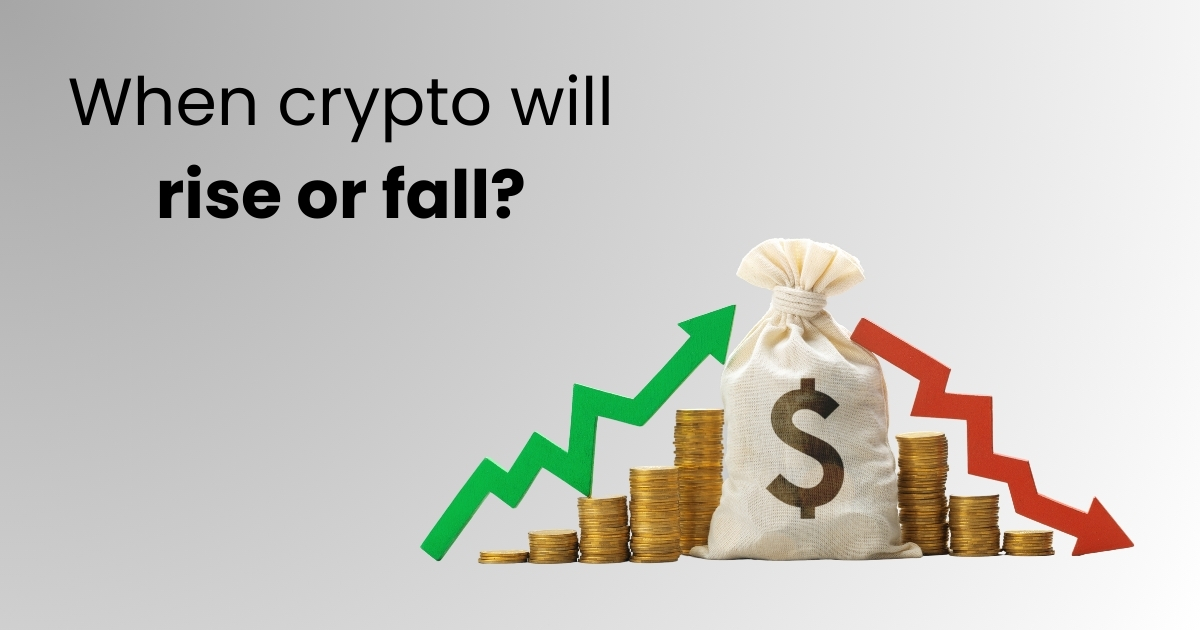Predicting when the stalling market will rise or fall is practically impossible out in the wild and woolly world of cryptocurrency, which combines a bad-ass reputation for volatility to an equally mind blowing tendency not only from one hour/minute/day/month/etc. For everyone, from new investors to experienced holders, it is essential that we better understand why these prices move up or down. The key factors that determine the roller coaster existence of cryptocurrencies are covered by this article and offer indicators for prospective market watchers.
Market sentiment and speculations around it.
Accordingly, the influence of market sentiment on cryptocurrency prices often cannot be underestimated. Of course, in the blockchain world, information and misinformation abound, with angles that can be played by not only sensational news sounds but also social media trends and influential power brokers. For example, if there is positive news such as a big company starting to accept Bitcoin this could cause the price of bitcoins to be very high for merchants and investors trying to ride on positive sentiment. On the other hand, we can see definitive decreases when there is bad news, i.e. increased modern regulation or having a hack in a scam.
Another reason for market sentiment is purely down to speculation. By contrast, traditional financial markets have assets with very well established ‘fundamental value’ (ie. what they are worth), and for paper currencies that will ultimately be paid in taxes at some level there is an intrinsic floor to how low their true market value can go. These rapid price swings occur because of the speculative nature where traders tend to act upon perceived opportunities or threats. Prices can surge when speculation is high and they can also crash just as fast with a shift in sentiment.
Regulatory Developments.
However, it is a double-edged sword as far as regulation for the cryptocurrency market goes. Well, transparency and enabling regulations on the one hand can provide legitimacy to cryptocurrencies creating a favourable investment environment for institutions thus allowing more people with crypto wallets making these investments. This can cause prices to rise slightly as the volatility in digital assets becomes lessened if they yield competing financial incentives. However, restrictive or punitive regulations would exert downward pressure on prices as investors speculate that more stringent laws could control the market in future.
Across the globe, countries have adopted different approaches toward cryptocurrency regulation. In several cases, governments are embracing blockchain or making alt-currency legal tender, and in some other places, authorities are lining up the forces against this new form of cash. In China some time ago, for example, when they banned trading and mining cryptocurrencies the market turned upside down.
Conversely, when countries such as El Salvador adopted Bitcoin as an official legal tender, the market enjoyed a bullish rally. That is why the market shudders with every sign of a new regulation, as it twists and turns to keep up in pricing this reality into current prices prevalent on the open.

Technology Improvements.
Cryptocurrency prices also rise and fall with the progress of technology in blockchain, as well. Innovations such as the birth of decentralised finance (DeFi) platforms, non-fungible tokens (NFTs), and fundamentals rotating to liquidity supply chain trading can cause substantial interest in the market. Cons: When the adoption of new technologies increases, it can also result in hype driving the price, which causes many to enter into investment thinking that they can make a profit based on current futures.
At the same time until technological breakthroughs, competition is something that can cause cost to fall. If a major cryptocurrency changes due to technical problems, such as hacking or network downtime that could instil fear among investors and lead prices down. Moreover, a slow adoption of new technologies or delays in deploying updates can result in frustration and sell-off. As such, market movements are based on the pace of innovation and whether cryptocurrencies can deliver on their technological promises.
Macroeconomic Factors.
In addition to these major external factors, the prevailing economic environment on a macroeconomic scale, inflation rates or expectations thereof, interest rates and global/international economic conditions also exert an influence on cryptocurrency prices. Cryptocurrencies like Bitcoin may serve as a hedge against the traditional financial markets during times of economic uncertainty or inflation. This was observed during the COVID-19 outbreak as Bitcoin, and other cryptos recouped vast amounts of ground while global central banks put stimulus measures in place to avoid deflation from taking hold.
Interest Rates Another Big One Low interest rates usually drive investors out of other assets and into purchases such as Bitcoin. Similarly, if interest rates go up; there may be a move towards more stable assets hence reduction in values of many cryptocurrencies. Moreover, world economic factors provide an aura of uncertainty to the mind caused by a real-world tension or trade war that even affects investors in Crypto Space.
Can You Provide Liquidity and Any Trading Volume?
Two significant factors that lead to the rise and fall of cryptocurrency prices are market liquidity and trading volume. Liquidity refers to the ability of an asset to be bought or sold without causing a significant impact on its price. The more liquid the market, less volatile prices compared to markets with low liquidity Those with the highest trading volumes, often along with better liquidity are less exposed to large price movements.
However, small trades can have a significant impact in times of low trading volume. This is obviously true for smaller or less known coins since the liquidity there can be highly limited. The price changes in these markets can be subject to significant and sudden fluctuation so that big buy or sell orders can entirely change market prices due merely to raw demand (vs. the action of natural sellers). Thus, keeping track of trading volume and liquidity is extremely important if you want to know the possible price movements in the crypto market.

Institutional Investment.
The past few years have seen institutional investment take the cryptocurrency market by storm. Institutional investors, including hedge funds and pension plans as well being publicly traded companies have chimed in on the market which means more credibility & money. As for the price, when large institutional investors announce they are getting into cryptocurrencies or participate in them a long way off their initial coin offering (ICO), it typically causes prices to soar as those markets interpret this level of acceptance and validation.
Nonetheless, the power of institutional investors is also capable of pushing prices down. If, for example, an institution elects to liquidate a large portion of their cryptocurrencies it will release selling pressure which can drive prices down. Moreover, institutions usually have a longer time horizon compared to retail investors and their decisions are influenced by macro-economic environment leading to less predictable price movement of a shorter term. If institutional interest in the crypto market keeps increasing, we can expect its impact on prices to be more observable.
Supply-Demand Dynamics.
The basic economic theory of supply and demand plays a major role in the fluctuating nature of cryptocurrency prices. One of the significant properties is that they have a limited cap, meaning only so many tokens will ever be created (Bitcoin for e. Just like gold and other commodities, bitcoin is a scarce asset that has the potential to increase in value over time due high demand for it this dynamic as new coins are issued keeps decreasing eventually from eventual removal of supply mines once bitcoins halving occurs.
The demand for cryptocurrencies is driven by many factors but not limited to investor appetite, use of the asset and its overall usefulness. In our economy, prices usually rise when demand exceeds the supply. But if demand is declining, or new cryptocurrencies hit the market and catch on with traders, prices can plunge. Supply and demand interaction is an ever-present catalyst for the movement of prices in a crypto market, making it significant to feature here as one with great predictive potential.
Conclusion.
Forecasting the next cryptocurrency boom or bust could be a delicate & nearly impossible task just as in any other prediction decision. The market is driven by many things including sentiment, speculation, and retail participation; regulatory progress or decline; innovation in technology developments over the years as well macroeconomic conditions affecting individual markets. Any of these factors can lead to significant price movements, frequently with little or no warning.
The most crucial factor with investing or implementing cryptocurrency is that it requires the person to be educated and change as conditions do. It is essential to have a sound understanding of the components that move prices as it can offer you an edge in your analysis. However, every trader ultimately knows there will always be risks associated with their trading. This is also why during the global changes that cryptocurrency activities face even now, you have to look two couple of steps ahead if businesses want their ventures inside this interesting industry be successful.

